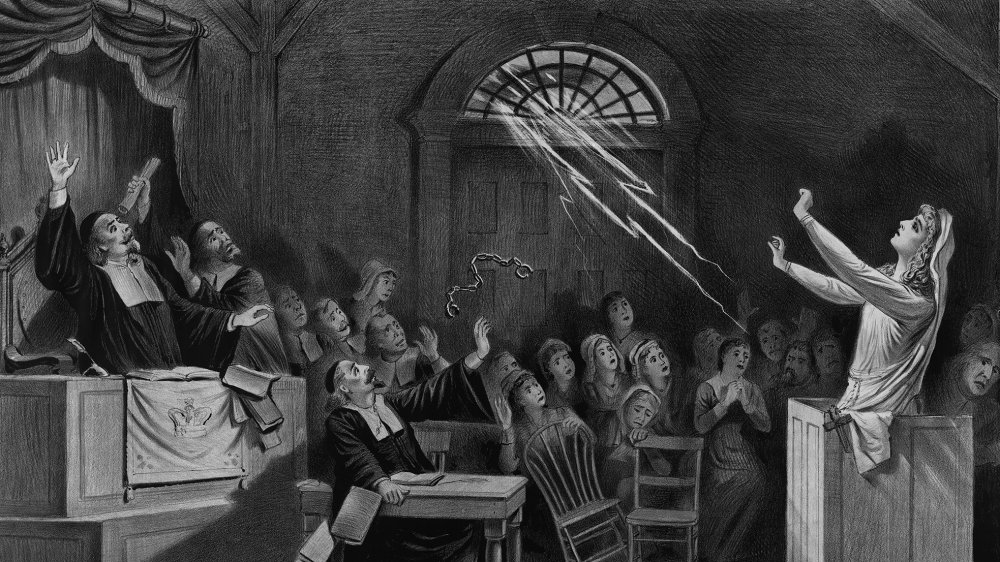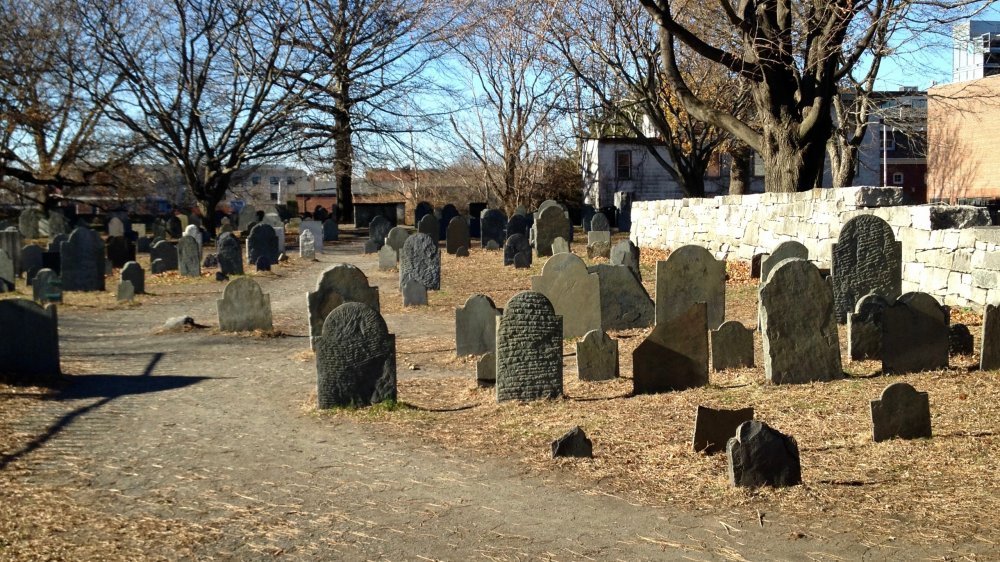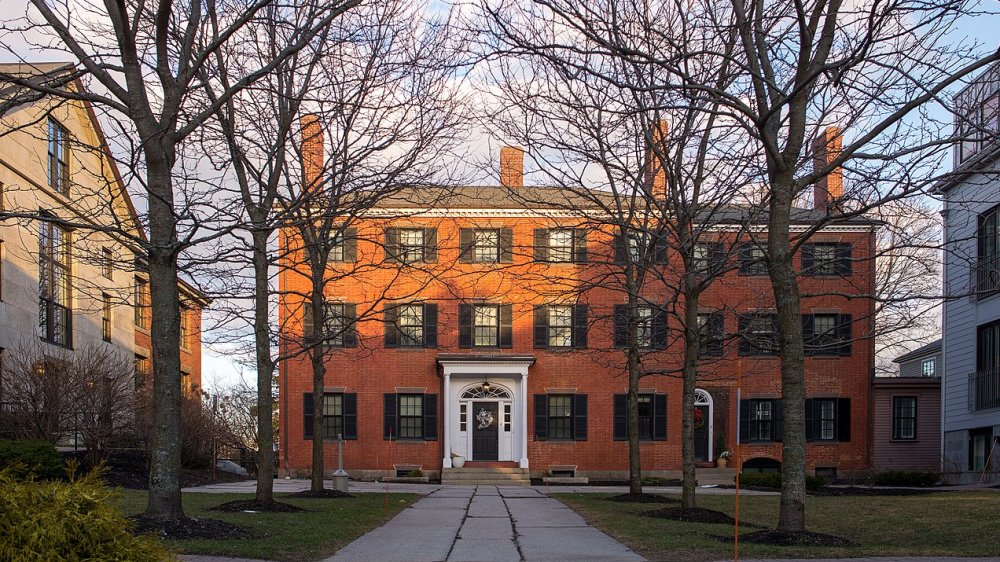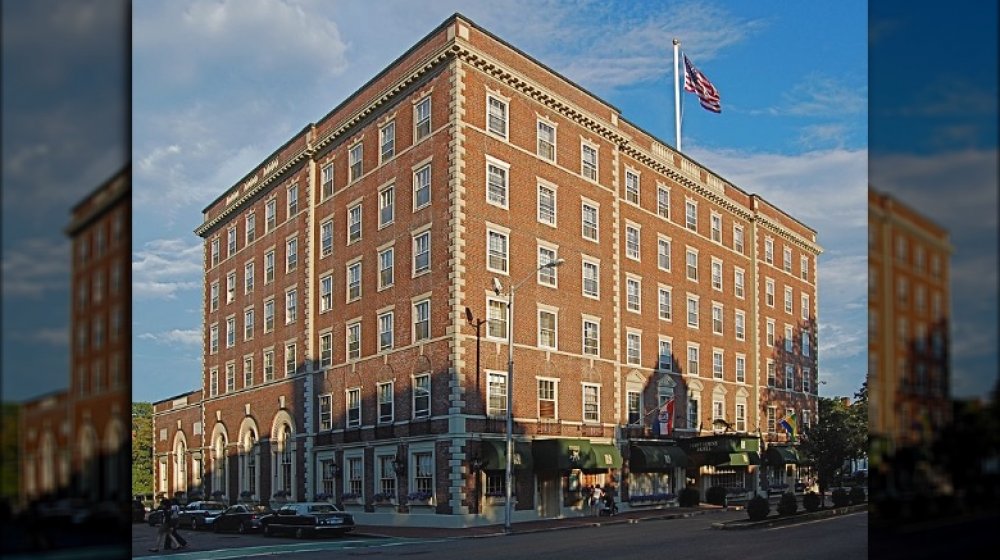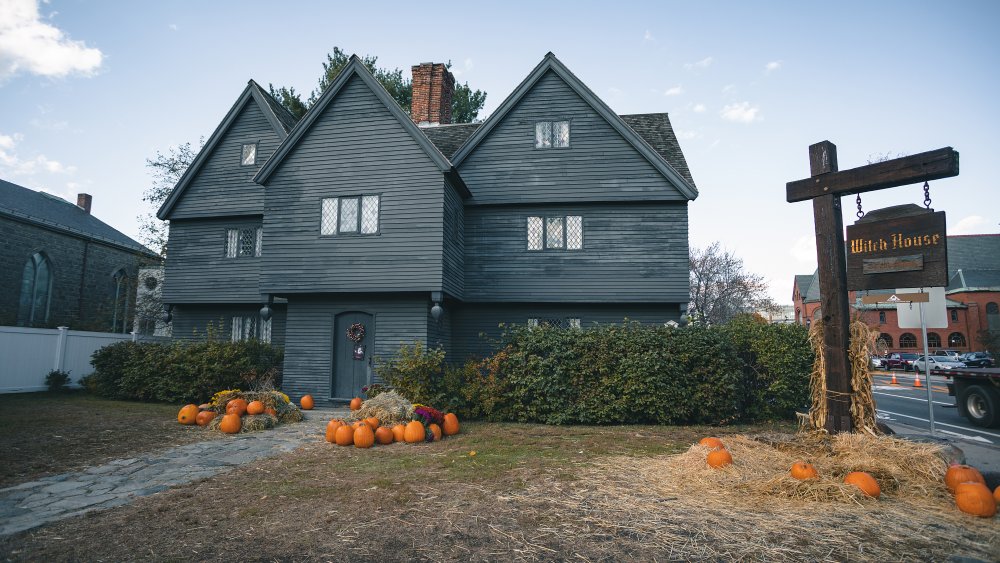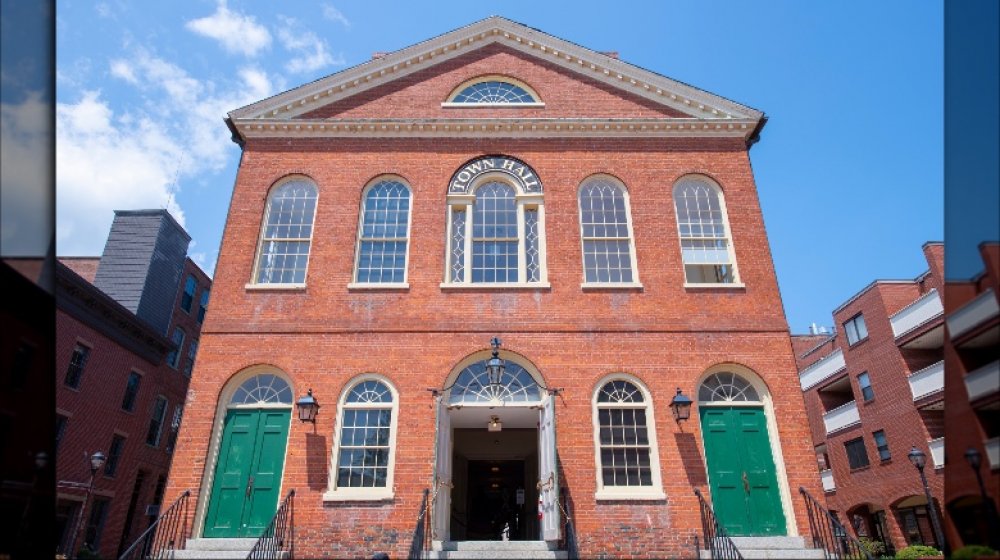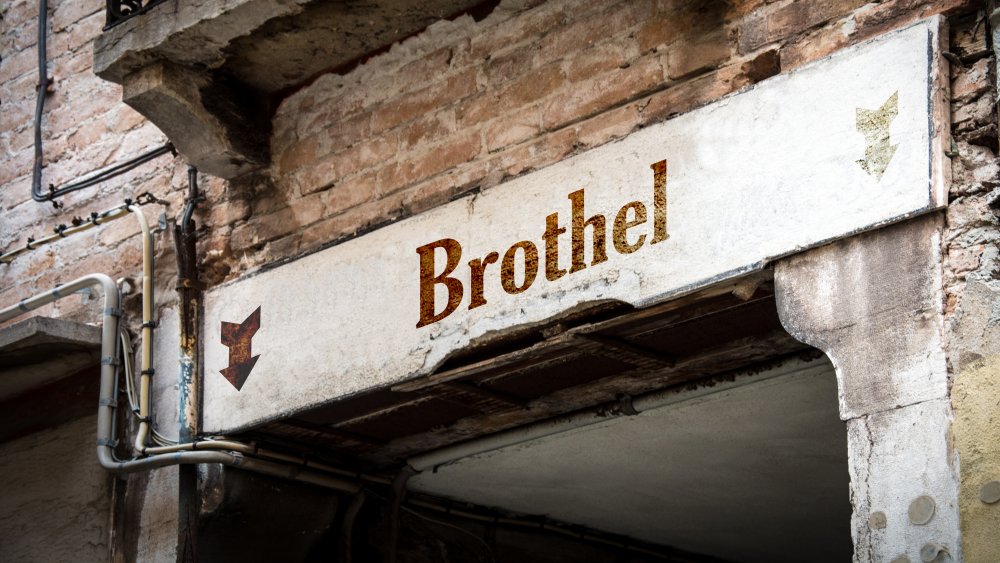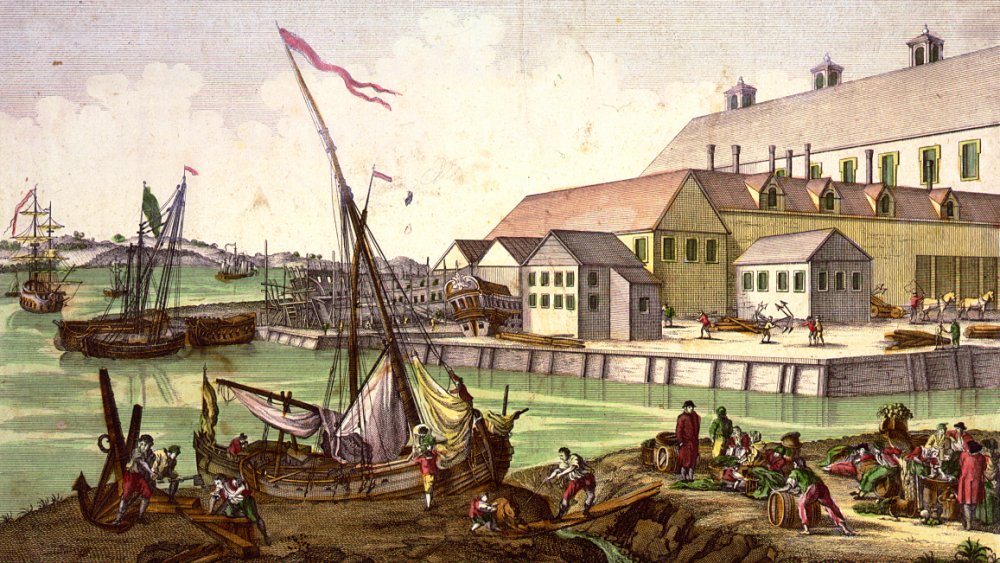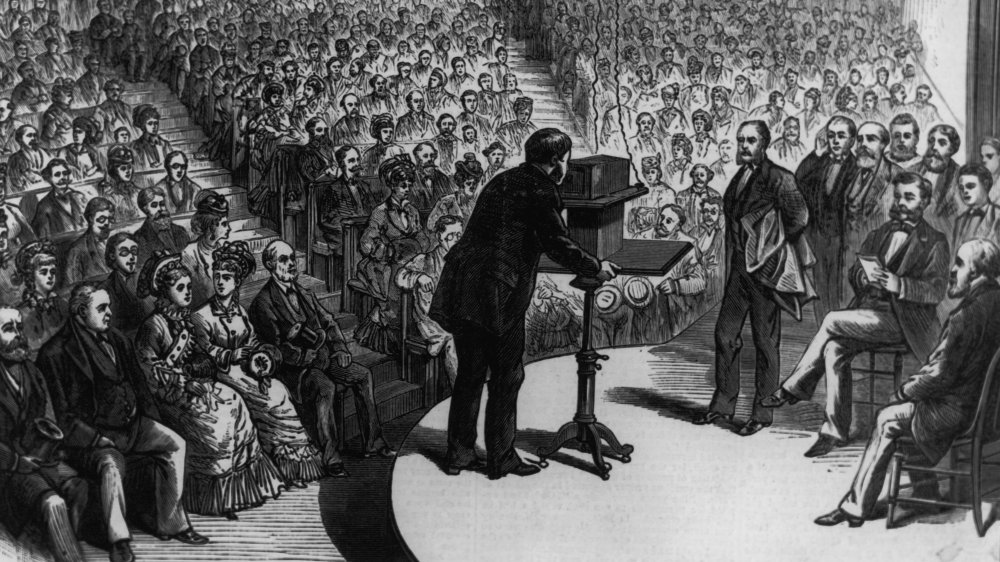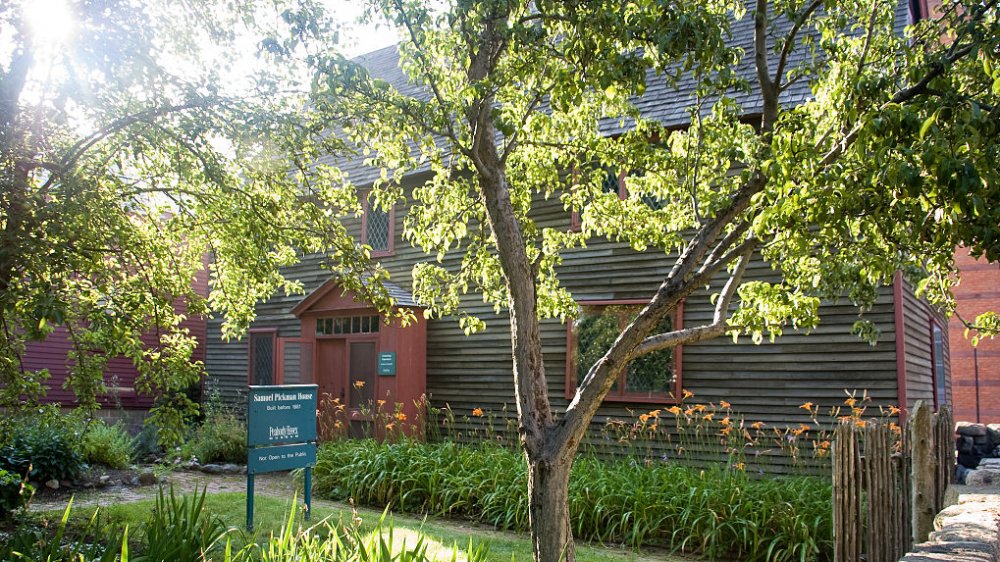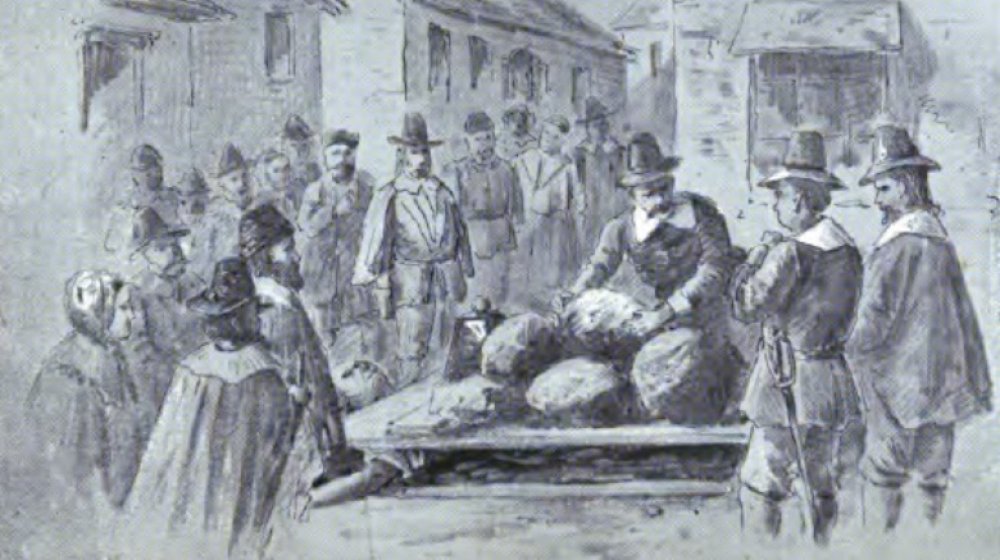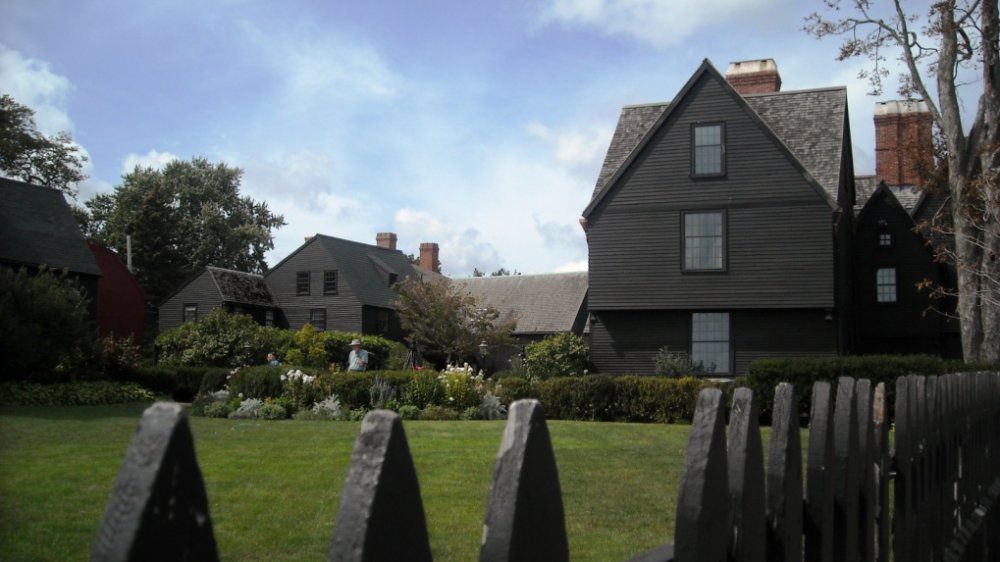The Most Haunted Places In Salem, Massachusetts
Salem, Massachusetts is known mostly for the horrific "witch trials" of 1692, which took the lives of 25 people. Victims of the infamous trials were either executed, crushed to death, or died in jail. But there were no witches in Salem, Massachusetts. The people who died during the infamous trials were just people, victims of hysteria, who really didn't stand a chance against Puritan paranoia and holy justice.
The witch trials aren't the only awful thing that ever happened in Salem, though. After the trials left the town with its notorious reputation, the Puritan facade sort of crumbled into depravity. It became a haven for pirates and smugglers, it had its own red light district where young men were frequently shanghaied from brothels and forced into service on board ships, and it even had a network of underground tunnels where smugglers could move stolen goods and stash the occasional body.
So no one should be really shocked that all those innocent people are still hanging around Salem, because that's what souls do when they die in cruel ways and for the wrong reasons. Now, more than 325 years after the infamous witch trials and at least 200 years since anyone has been shanghaied, Salem is one of the most haunted places in America.
This is where all the bad stuff went down in Salem
For "Pure" -itans, the Puritans sure did a lot of not very pure things. For a start, they killed innocent women, put a 4-year-old girl in a dungeon for eight months, and pressed a dude to death under heavy stones (but all in the name of God, so it's not like it was evil or anything). The depravity didn't end there, though. According to Smithsonian, they also let the bodies of the hanged just fall into a crevice, because witches weren't supposed to get Christian burials.
For more than 300 years, popular legend said this all happened at Gallows Hill, but in 2016 evidence came to light that the hangings actually took place at Proctor's Ledge, which is more exposed (the better to make a spectacle out of the killings) and easier to access. There's doubt as to whether any bodies remain at the site — most, if not all, were retrieved in secrecy by family members. That hasn't stopped at least one spirit from haunting the place, though. Called "The Lady in White," which is not really a super-creative name for a phantom but whatever, this spirit is said to manifest briefly and then vanish. Sometimes she simply wails disembodiedly and sometimes she (or maybe other spirits) manifest as cold spots or floating orbs.
The Old Burying Point Cemetery, because of course the Old Burying Point Cemetery
This very literally named cemetery is where John Hathorne, the judge who presided over the Salem witch trials, is buried. You'll be pleased to hear that his ghost still wanders amongst the tombstones, hopefully tripping over them and occasionally stepping in a pile of poo some local dog left behind a rock because this dude doesn't deserve a restful slumber.
Judge Hathorne isn't the only person of note buried in this cemetery. This is the final resting place of Revolutionary War figures John Brooks and Sarah Bradlee Fulton, along with around 600 other people including 50 slaves. According to Salem Ghosts, the oldest grave on the site dates back to 1683, and the most recent is dated 1881.
Judge Hathorne is the cemetery's most famous ghost — he's been photographed standing near his own grave. And the usual parade of orbs, disembodied voices, and cold spots appear to make their home here, too, so if you're going to visit you might want to do it in the daytime. With some friends.
And the Old Salem Jail, too
Old jails are always haunted. Obviously. Bad things happen in jails, plus they're full of bad people who are really bored and those bored bad people eventually become bored bad ghosts. So already Salem Jail had some things working against it, but then they had to go build it on top of a dungeon, and that's pretty much a recipe for the freaking Amityville Prison.
According to Salem Ghosts, conditions at the old jail were pretty deplorable, and a lot of prisoners died as a result of poor care. Today the old building has been converted into a restaurant and some apartments, so expect to hear about young children getting sucked into closet portals at some point. Anyway, a ghostly prison guard still walks the halls carrying a clipboard, and witnesses have heard women weeping, which was probably a regular thing during the Salem witch trials, when the accused were kept in the dungeon down below. Oh and residents hear rattling chains and moans, too, so some pretty typical Dickensian stuff happens there. On the plus side, you could probably rent a little two-bedroom for cheap, as long as you don't mind having a poltergeist for a roommate.
Just about every hotel in Salem, but especially this one
If you're going to stay overnight in Salem, Massachusetts, you might want to book a room at the Best Western or the Holiday Inn, because it seems all of the old hotels and bed and breakfasts in Salem have ghosts. Named for Judge Hathorne's famous grandson Nathaniel Hawthorne (author of some books they made you read in high school), the Hawthorne Hotel was built on the site of an old apple orchard, and evidently the apples totally haunt the place. No, really.
Why are there ghostly apples at the Hawthorne Hotel? Well it's not so much the orchard as it's the woman who once owned the orchard — Bridget Bishop was one of the first victims of the Salem witch trials, and according to Haunted Rooms, visitors sometimes swear they can smell apples in the hotel, even though the restaurant that operates in the building doesn't serve anything with apples in it.
There's more creepiness than just the smell of phantom apples though. Hawthorne hotel also has an apparition, which is particularly associated with room 612. The ghost of a woman is sometimes seen wandering the halls in front of that room. Sometimes, she pauses at the door. Hotel guests have reported feeling as if there's someone else in the room with them, so that's fun. There's also a haunted ship's wheel that turns on its own, and some people have heard the sound of an infant wailing in distress.
You can tear down the house, but you can't get rid of the ghosts
The Joshua Ward House (also known as the Witch House) is a Federal-style home that once belonged to a sea merchant named Joshua Ward. Cool, but according to Atlas Obscura it was built on the foundation of a much more notorious house, the one that Sheriff George Corwin lived in. During the Salem witch trials, Corwin's home also doubled as an interrogation site, you know, so he could avoid the commute and just roll into bed after a long day of torturing innocent people.
Legend says that Corwin tortured accused witches in his basement by tying their necks to their ankles, which earned him the nickname "The Strangler." He also presided over the execution of Giles Corey, who was crushed under a pile of stones because he refused to enter a plea in the ridiculous poop-show that was unfolding in his town. Good for him, but he died for his principles. He did manage to utter a curse against Sheriff Corwin with his dying breath, though, so good for him times two. Corey supposedly haunts the Joshua Ward House today, and so do a bunch of other spirits, including a full-body apparition who was recently photographed there. The Joshua Ward House ghosts are especially terrifying, too — some people have reported feeling as if they were being strangled by invisible hands, and others claim to have been scratched or burned.
Nothing happened at this Salem location, but it's haunted anyway
The Old Town Hall is supposed to be one of the most haunted buildings in Salem, but no one can really name anything bad that actually happened there. According to Ghost City Tours, the hall was built sometime around 1817, so it post-dates the Salem witch trials by more than a century. The building has had a couple of fires, but there haven't been any murders or tragic accidents or violent interrogations or any of the usual events that might prompt a haunting. Still, the place is haunted, at least according to eyewitnesses. The closest anyone seems able to come to a theory is that the building once had an entrance to the series of tunnels that run under the town of Salem and were used by smugglers and "gentlemen" who were sneaking in and out of brothels. The tunnels were probably used for other sinister purposes, too, like transporting slaves or the bodies of murder victims.
At some point, the people in charge of things at the Old Town Hall thought it might be wise to just seal up the entrance to the tunnel, but if the theory is right, that wasn't enough to keep the ghosts out. The most prominent spirit in the Old Town Hall is a poltergeist — it's been known to turn the lights on and off during Town Hall events, move objects around, and violently throw things. Some eyewitnesses have even photographed spirits at this location.
This former brothel is haunted by kidnapped sailors
After the trials were over and it sort of sank in just how awful the whole incident had been, Salem strayed from its Puritan roots, in a big way. Brothels started to pop up around town, and before you know it Salem was famous not for its devout residents but for its depravity. As a seaside town, Salem was frequented by sailors, and we all know what sailors get up to after all those weeks at sea.
Anyway, one of the most notorious brothels in Salem was a place now known as Mercy Tavern. It wasn't just a house of prostitution, it was also where a lot of, um, "recruiters" would go when ships' captains needed sailors, but no one was volunteering. Young men would often vanish from Mercy Tavern, and many of them would die on board whatever ship they'd been forced to serve on. Unsurprisingly, a lot of them returned to Mercy Tavern after their deaths. You know, just to make themselves into problems for the proprietors.
Mercy Tavern is now an above-board restaurant, but the dead sailors don't know that. According to Ghost City Tours, guests sometimes report seeing their ghostly apparitions hanging around near the bar, and staff say that when the place is empty they'll sometimes hear disembodied voices.
There are pirate ghosts in Salem, too
The only thing that could really make Salem even creepier than the spirits of wrongfully accused witches would be pirate ghosts. Because pirate ghosts are all well and good when they're on a ride at Disneyland, but most people don't want to run into one in person.
As it turns out, pirates were big in Salem and a lot of the men who were shanghaied at places like Mercy Tavern weren't taken on board respectable ships but were compelled into becoming pirates. In fact, Salem did a pretty brisk business in stolen goods, which is why they needed smuggler's tunnels underneath the city. And pirates, as anyone who has seen Pirates of the Caribbean knows, pretty much always end up eternally walking the Earth.
According to Where Traveler, the Salem Waterfront is one of the most haunted locations in the city. Witnesses have reported hearing the disembodied voices of sea captains, though it's not super clear how they know the voices come from sea captains particularly, since they're disembodied and all. Perhaps their disembodied voices say things like "Arrgh, matey, where's my peg-leg?" Other visitors have actually seen ghosts on the waterfront — there have evidently been reports of phantom pirates emerging from the water, so just in case you needed a reason not to walk around a creepy old waterfront late at night, well, there you go.
Maybe Salem's ghosts wanted this boring lecture hall to be less boring
When Salem's residents weren't hanging out in brothels or fencing stolen goods or killing people under piles of rocks, they were attending lectures. Lyceum Hall served as the local auditorium starting in 1831, and the building also has the distinction of being the place where Alexander Graham Bell placed the world's first telephone call. According to Salem Ghosts, a lot of notable people spoke there over the years, including David Thoreau, Ralph Waldo Emerson, and Oliver Wendell Holmes. So that's cool, but not exactly the sort of thing that stirs up the powers of darkness or anything.
Today Lyceum Hall is a seafood restaurant, so possible ghosts could include phantom lobsters (getting boiled alive is up there on the list of violent deaths) and those bibs you have to wear when you actually eat the lobster, because plastic waste is evil. Just kidding. The ghost that haunts Lyceum Hall (now Turner's Seafood) is supposedly witch trial victim Bridget Bishop. Like the Hawthorne Hotel, Lyceum Hall was built on top of the land where Bridget's apple orchard used to stand, and visitors often say they can smell apples even though apples don't really go great with fish.
Bridget's ghost (if it really is Bridget) is a mean one. She throws things, she stares at people from reflective surfaces, and she wears a white dress that floats creepily behind her as she drifts around the building.
Salem even has a murder house
The witch trials were a special kind of evil, but there was run-of-the-mill evil in Salem, too. One of those very bad things happened at the Pickman house, which is right next door to the Old Burying Point Cemetery and has been standing since before the witch trials.
The Pickman House was originally owned by a sailor named Samuel Pickman, and over the years it's served as a home, an artist's studio, and a living museum. It's also the scene of some horrific murders, at least according to folklore and everyone knows that folklore is always true.
In the 18th century, three people lived in the Pickman house — a 7-year-old girl, her mother, and the wack job patriarch of the household who was always telling his family that there were demons in the home, which in retrospect really should have been everyone's first clue. According to Ghost City Tours, this upstanding husband and father chained his daughter up in the attic, then tied his wife to a tree in the yard and dumped molten wax over her head. After his wife's slow and unpleasant death, he went back into the house and hanged himself. The couple's daughter eventually starved to death. Visitors have photographed the phantom child in the second story window, and neighbors claim to hear the disembodied voices of children coming from the house.
Giles Corey's curse and other ghostly antics
What became of Giles Corey, the guy who was smooshed under a pile of stones and cursed Sheriff Corwin with his last breath? Besides death, of course. Well, his body was taken to the Howard Street Cemetery and buried in an unmarked grave. Today he's sort of the town's own harbinger of doom.
Corey wasn't really the typical accused-witch. According to Salem Ghosts, he was targeted not because of who he was but because of what he possessed. Corey had land and money, and according to the town rules, a criminal's stuff got divided up amongst the townsfolk after his conviction, so ... let's just say there wasn't a good reason for him not to be a witch.
A few years after Corey's death, his curse began to take hold. Sheriff Corwin died of a heart attack, which wouldn't have been that strange except he was only 30. Subsequent Salem sheriffs also had terrible heart or blood problems, and that only seemed to end when they moved the sheriff's office out of town. So it wasn't just Corwin who was cursed but the whole Salem sheriffing profession. A successful curse wasn't enough to quiet Corey's restless spirit, though — his ghost is occasionally seen in the Howard Street Cemetery, and it's said to foretell terrible events. In 1914, it was seen right before a fire that destroyed most of Salem. Then ... okay it was just that one terrible event, but still.
The famous Salem house that may or may not be haunted
John Turner built The House of the Seven Gables in 1668, but it wasn't called that until Salem's famous resident Nathaniel Hawthorne wrote a book by the same name.
According to 7gables.org, Hawthorne's second cousin Susanna Ingersoll inherited the house in 1804. Hawthorne — who was the grandson of the infamous Salem witch trials judge — often visited Susanna in her home and the Jacobean/Post Medieval style house inspired him to write his famous novel.
Besides the part where the house just looks like it must be haunted, there's not a lot of sordid history there. Tour guides say there aren't any ghosts on the property, but visitors often say otherwise. Some witnesses claim to have seen or heard a phantom boy playing in the attic, which once doubled as servants' quarters. Others say that Susanna Ingersoll still haunts the place — she's been seen in the halls and looking out of the windows. By most accounts, Susanna lived a contented life, so perhaps she just couldn't see any reason to leave.
